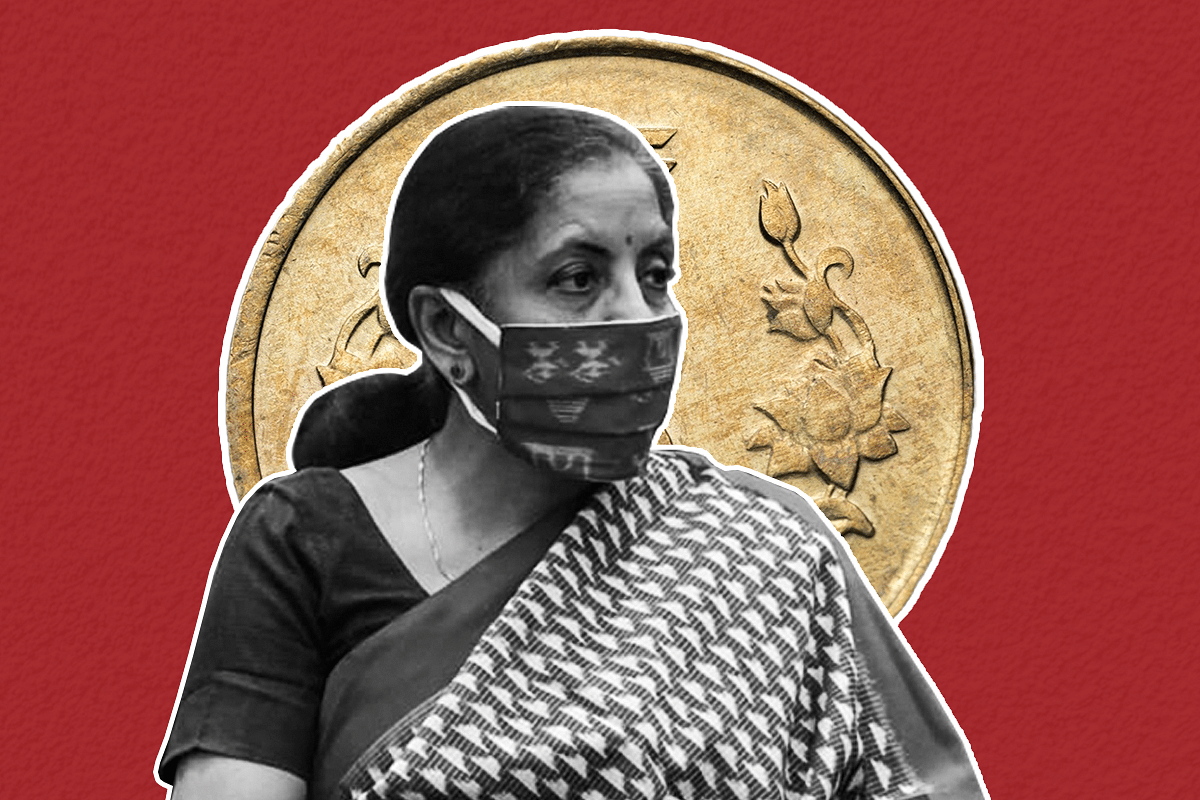Economy
Real Risk In Centre-State Deal On GST Is That Cess Could Become Permanent
- The GST cess risks becoming a permanent feature unless preventive safeguards are built into the structure.

Union Finance Minister Nirmala Sitharaman. (Illustration: Swarajya Magazine)
The decision of the Goods and Services Tax Council to offer compensation for states’ revenue losses by allowing them to borrow more is a reasonable compromise. For now.
Under the deal reached yesterday (27 August), states can borrow on favourable terms from the Reserve Bank of India (RBI) through two options: a basic GST implementation loss of around Rs 97,000 crore, or a full compensation amount of Rs 2.35 lakh crore.
The borrowed amounts will be repaid by future collections of a cess on luxury goods and services which will now continue well beyond its expiry date of 30 June 2022, when the central guarantee on revenue growth to states is supposed to end.
Given these options, which will be debated and sealed at the next GST Council meeting in September, most states are likely to go for option 2, which guarantees them higher revenues in fiscal 2020-21, when the fiscal borrowing caps will be eased for them. Also, since the borrowings will be amortised by cess collections, the effective repayment burden on states will be far lower.
Details of this scheme, especially the terms on which the RBI will lend to states, and the interest rates, will be known only after the government and the central bank work out the nitty-gritties.
As a short-term compromise, this federal deal to get all states out of their Covid-induced financial crises is fine. You don’t check if you have fire insurance just when a fire has broken out. You first put out the fire and then worry about the rest.
In this case, we should not worry – in fiscal 2020-21 – about the impact of the additional borrowings on the fisc, and ultimately demand, if downward adjustments have to be made later for state and central spending.
But we need to note two caveats on the downside.
It is worth recalling that the income tax surcharge and the health and education cess show no signs of ever being withdrawn. The GST cess may well go that way, unless the voting law allows the cess to automatically terminate, and levying a new cess calls for a 100 per cent consensus on it. Even one state holding out should not allow the cess to be removed.
It is also worth noting that states facing natural calamities are already allowed to impose a cess on GST to raise additional revenues. Kerala, which faced unprecedented floods in 2018, has already done so.
It is only a matter of time before this state-level cess becomes ubiquitous, for there is no state in India which does not face a natural calamity (drought, flood, hailstorm, or earthquake) some time or the other.
The GST cess risks becoming a permanent feature unless preventive safeguards are built into the structure.
Second, the real battle lies ahead in 2021-22, when the central guarantee of 14 per cent annual revenue increase expires and states start demanding its continuance or compensation in other forms.
This again leaves open the possibility that guarantees will remain, even if at a lower level of annual increase, and these will get funded by the cess or by bringing in additional items under higher GST slabs.
Once again, revenue considerations could postpone reform of the GST structure – both on number of rates and carving out exceptions and exclusions – in order to avoid Centre-state acrimony.
The 27 August compromise is valid for now, but one should worry about how long it can endure. Once a tax is internalised by the system, governments seldom lose the appetite for it to continue.
Introducing ElectionsHQ + 50 Ground Reports Project
The 2024 elections might seem easy to guess, but there are some important questions that shouldn't be missed.
Do freebies still sway voters? Do people prioritise infrastructure when voting? How will Punjab vote?
The answers to these questions provide great insights into where we, as a country, are headed in the years to come.
Swarajya is starting a project with an aim to do 50 solid ground stories and a smart commentary service on WhatsApp, a one-of-a-kind. We'd love your support during this election season.
Click below to contribute.
Latest